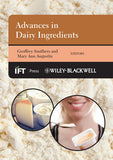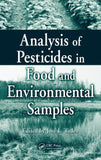Sensory Analysis for Food and Beverage Quality Control : A Practical Guide by D Kilcast
Sensory Analysis for Food and Beverage Quality Control, 1st Edition
A Practical Guide
D Kilcast
24 May 2010
Woodhead Publishing
400
This is a unique Book featuring :
- Highlights key aspects to consider when designing a quality control program including sensory targets and proficiency testing
- Examines methods for sensory quality control and statistical data analysis
- Reviews the use of sensory quality control programs in the food and beverage industry featuring ready meals, wine and fish
Description
Producing products of reliable quality is vitally important to the food and beverage industry. In particular, companies often fail to ensure that the sensory quality of their products remains consistent, leading to the sale of goods which fail to meet the desired specifications or are rejected by the consumer. This book is a practical guide for all those tasked with using sensory analysis for quality control (QC) of food and beverages.
Chapters in part one cover the key aspects to consider when designing a sensory QC program. The second part of the book focuses on methods for sensory QC and statistical data analysis. Establishing product sensory specifications and combining instrumental and sensory methods are also covered. The final part of the book reviews the use of sensory QC programs in the food and beverage industry. Chapters on sensory QC for taint prevention and the application of sensory techniques for shelf-life assessment are followed by contributions reviewing sensory QC programs for different products, including ready meals, wine and fish. A chapter on sensory QC of products such as textiles, cosmetics and cars completes the volume.
Sensory analysis for food and beverage quality control is an essential reference for anyone setting up or operating a sensory QC program, or researching sensory QC.
TABLE OF CONTENTS :
Part 1 Designing a sensory quality control program: Designing a sensory quality control program; Selection and management of staff for sensory quality control; Proficiency testing of sensory panels.
Part 2 Methods for sensory quality control and analysis of results: Sensory methods for quality control; Establishing product sensory specifications; Combining instrumental and sensory methods in food quality control; Statistical approaches to sensory quality control.
Part 3 Sensory quality control in practice: Using sensory techniques for shelf-life assessment; Sensory quality control for taint prevention; Sensory quality definition of food ingredients; Sensory quality control in the chilled and frozen ready meal, soup and sauce sectors; Sensory quality control in the wine industry; Sensory quality control of distilled beverages; Sensory quality control of fresh produce; Sensory quality management of fish; Sensory quality control in food service; Sensory quality control of consumer goods other than food.
Related Products
-
A Textbook of Modern Toxicology,...
8,942.00
10,520.00 -
Advances in Dairy Ingredients By...
15,497.00
18,231.00 -
Advances in Heat Transfer Unit O...
15,988.00
18,810.00 -
Analysis of Food Toxins and Toxi...
18,900.00
21,479.00 -
Analysis of Foods and Beverages ...
5,725.00
-
Analysis of Pesticides in Food a...
2,895.00
13,068.00
- Architecture & Construction Management Books
- Biochemistry, Bioengineering and Biotechnology Books
- Books on Analytical Techniques, GC MS, LC, TLC, HPLC, NMR Spectroscopy
- Books on Water and Wastewater Treatment, Analysis Water Treatment Plants
- Chemical Technology, Organic Chemistry, Chemical Synthesis and Chemical Analysis Books
- Cosmetics Science, Cosmetics Formulations, Manufacture and their Analysis Books
- Drugs and Pharma Science Books
- Essential Oils, their Analysis, Natural Products Extraction, Distillation , Isolates Related Books
- Flavor Science, Flavor Analysis, Flavor Creation, Food Flavors Books
- Food Science and Technology, Baking , Food Ingredients , Food Quality , Food Regulations
- Formulations of Perfumes for Agarbatti, Air Freshners, Soaps & Detergents, Fabric Softeners , French style Perfumes, Attars , OUD, Fine Fragrances
- Fragrances, Scents, Attars , Perfumery and Aroma Chemicals Books
- Herbal, Ayurvedic, Medicinal Plants and Aromatic Plants Books
- Law Books
- Major Reference Works (MRWS) Sets - MultiVolume Sets
- Medical Books
- Medical Journals Wolters Kluwer | Medknow India
- NEW ARRIVALS
- Perfumer's Resources
- Special Indian Reprint !


















